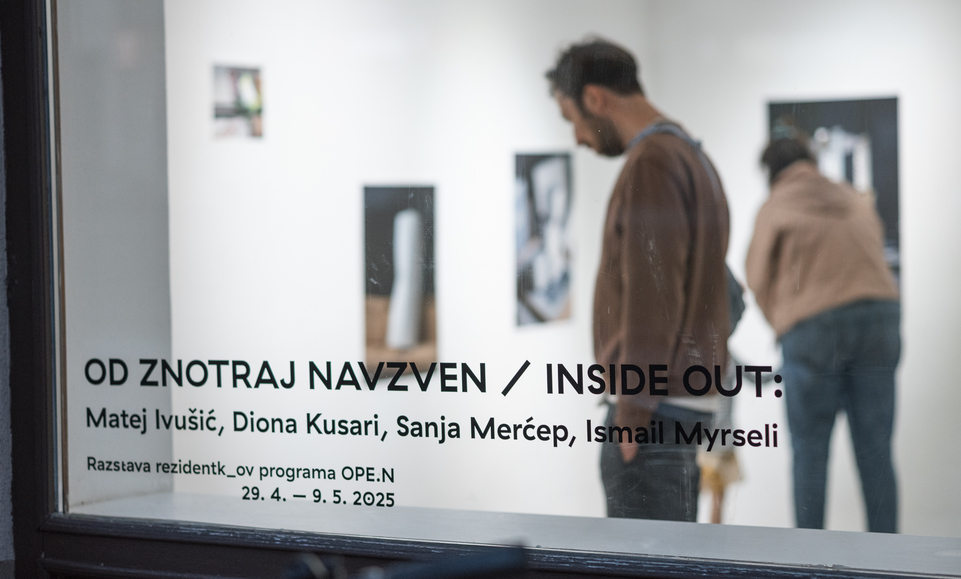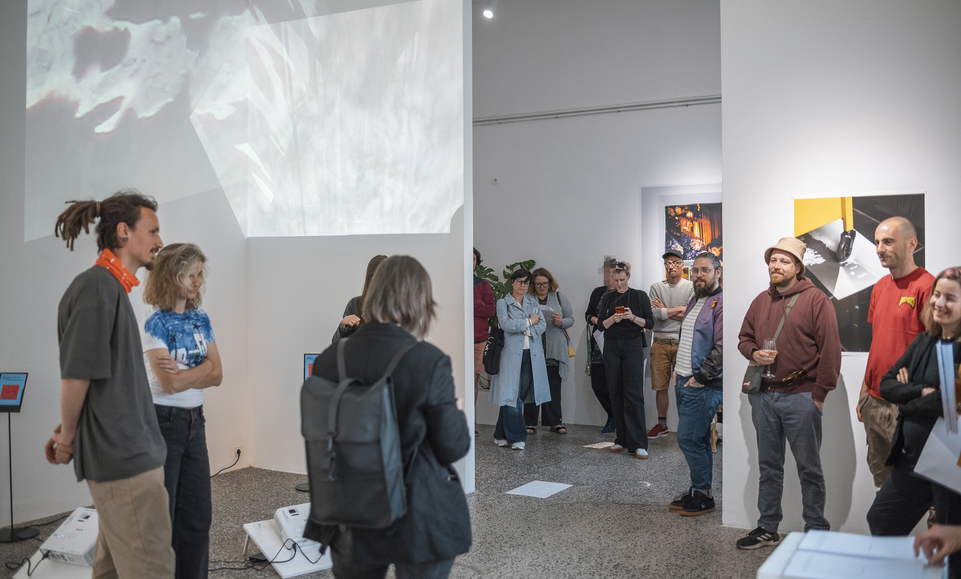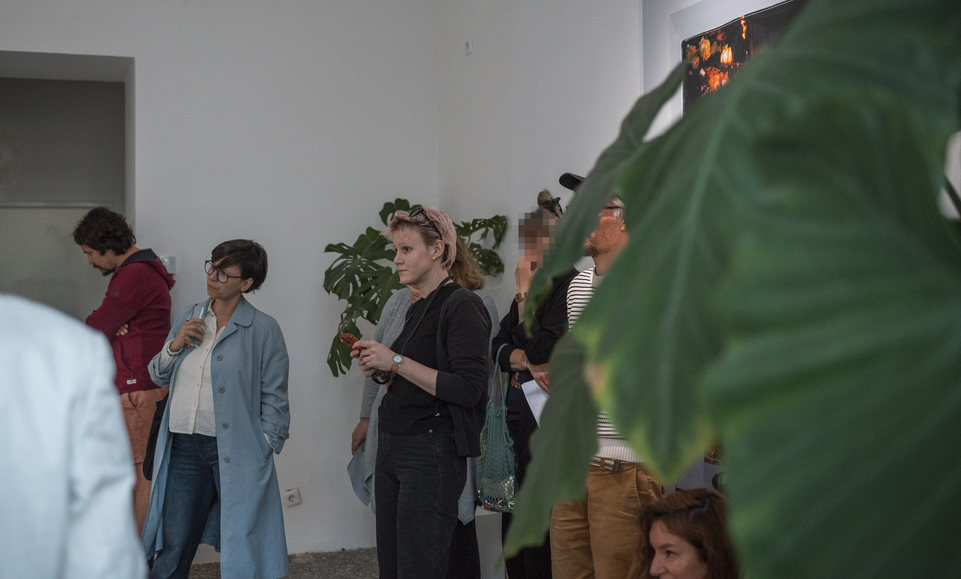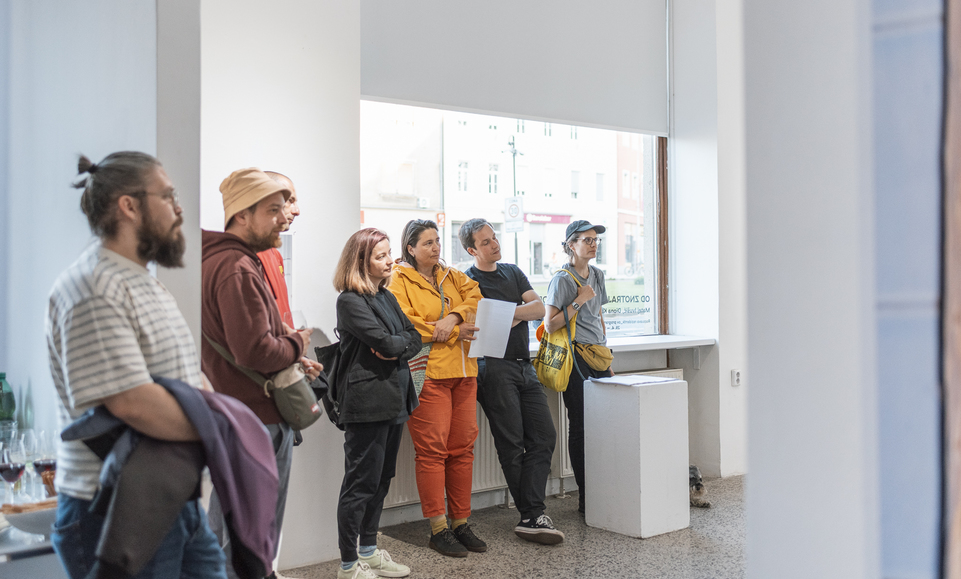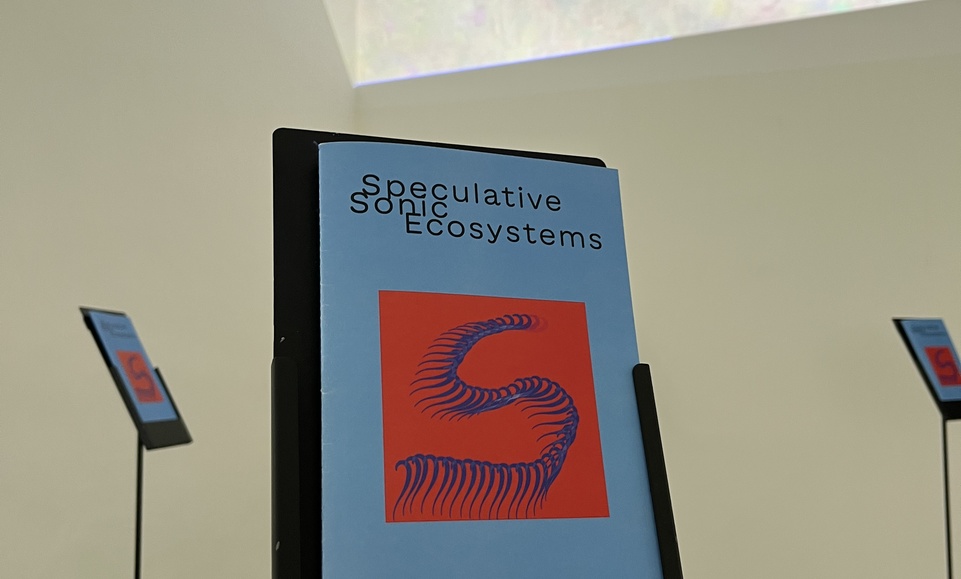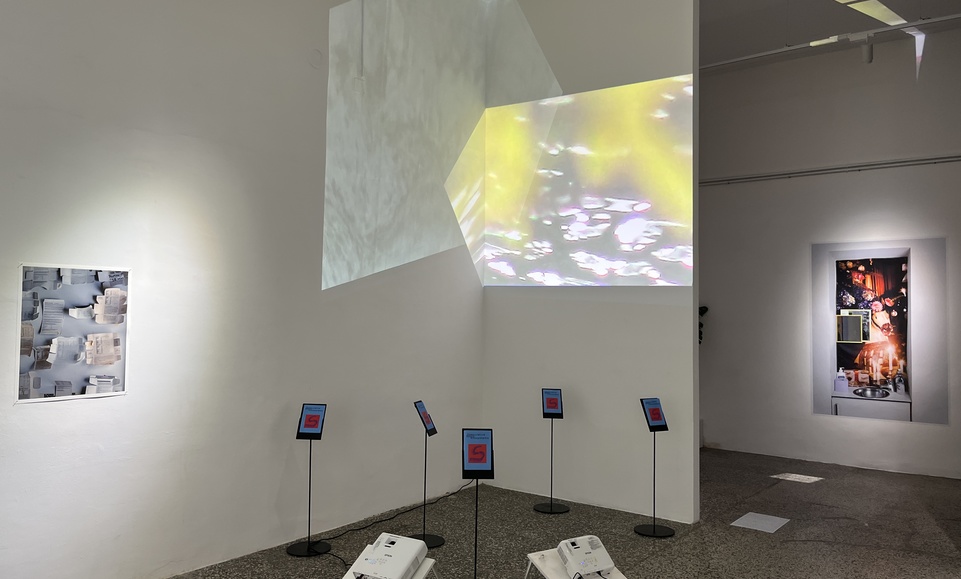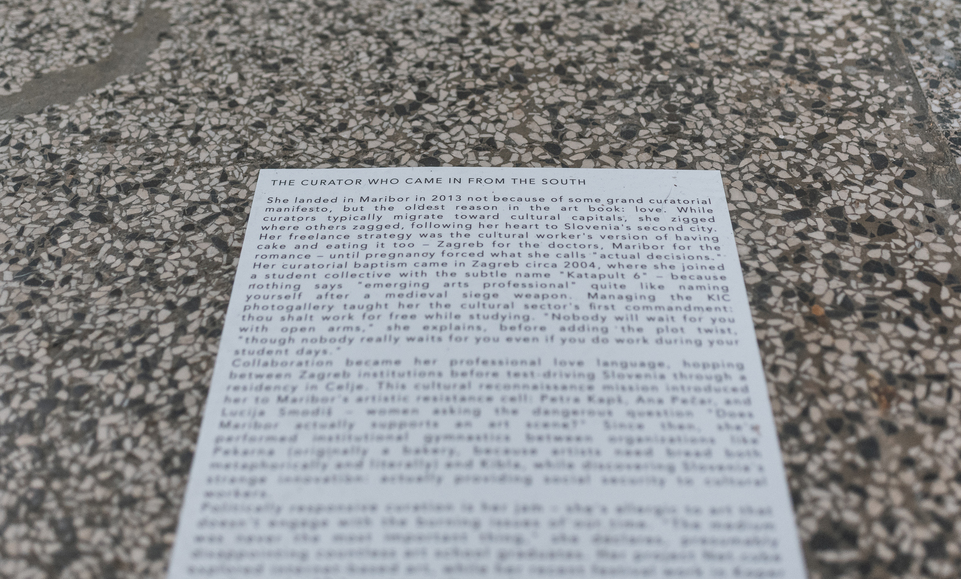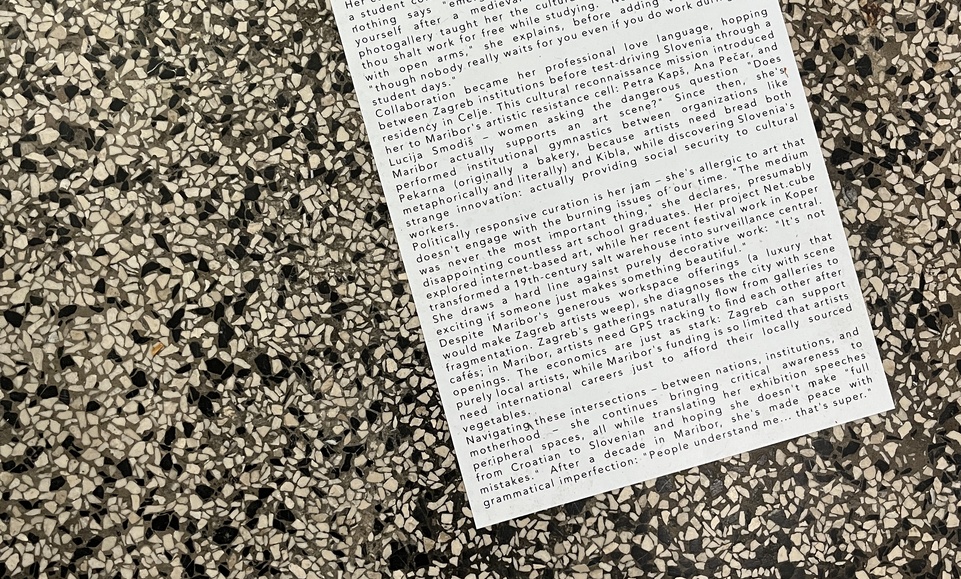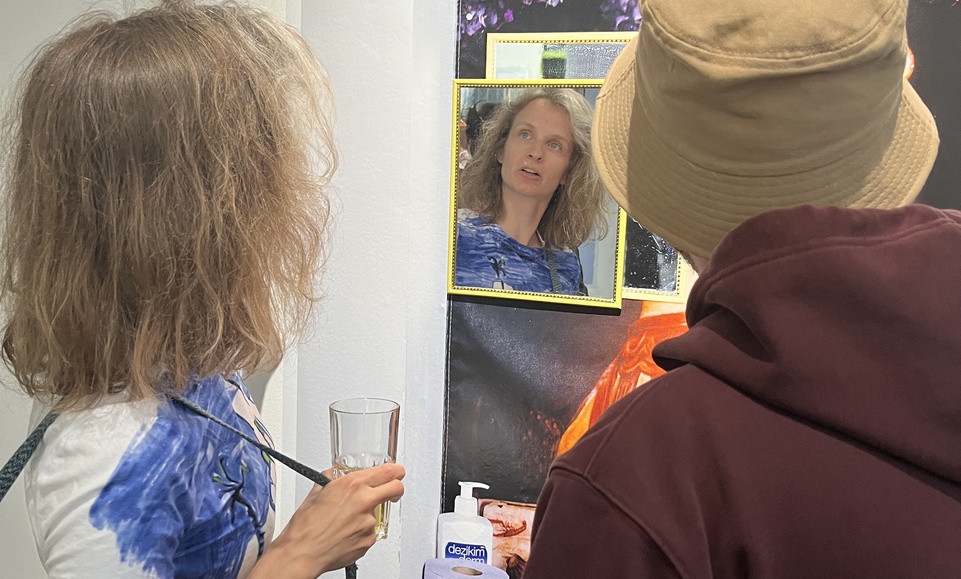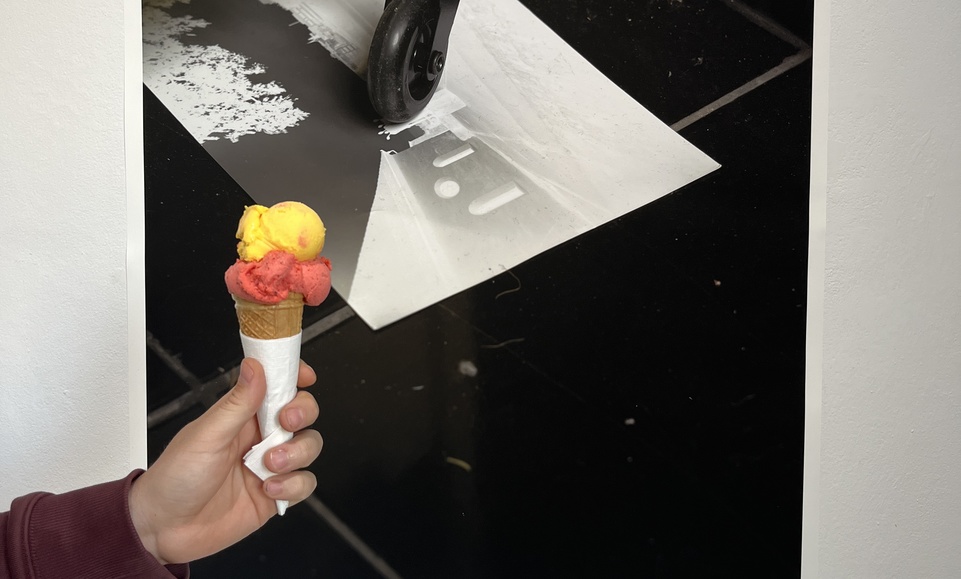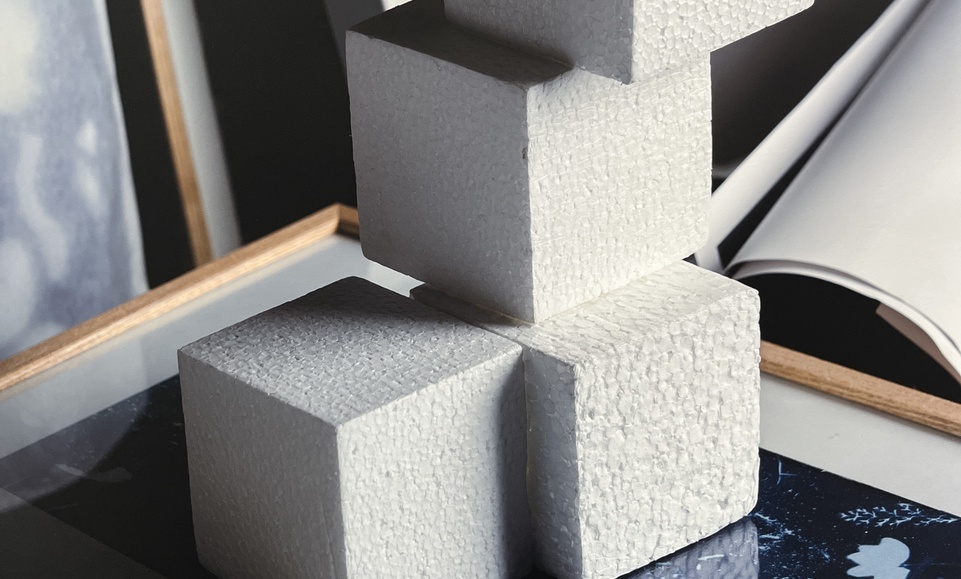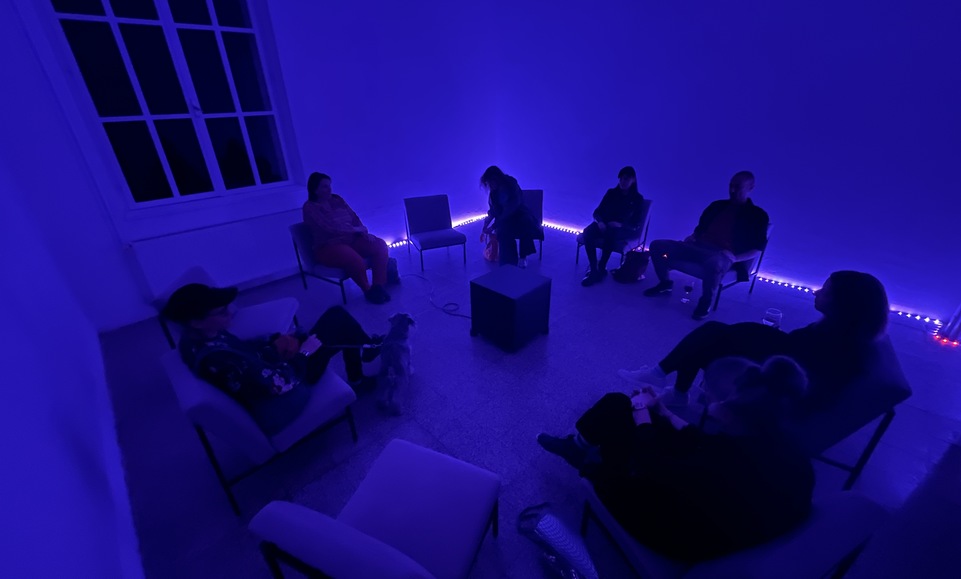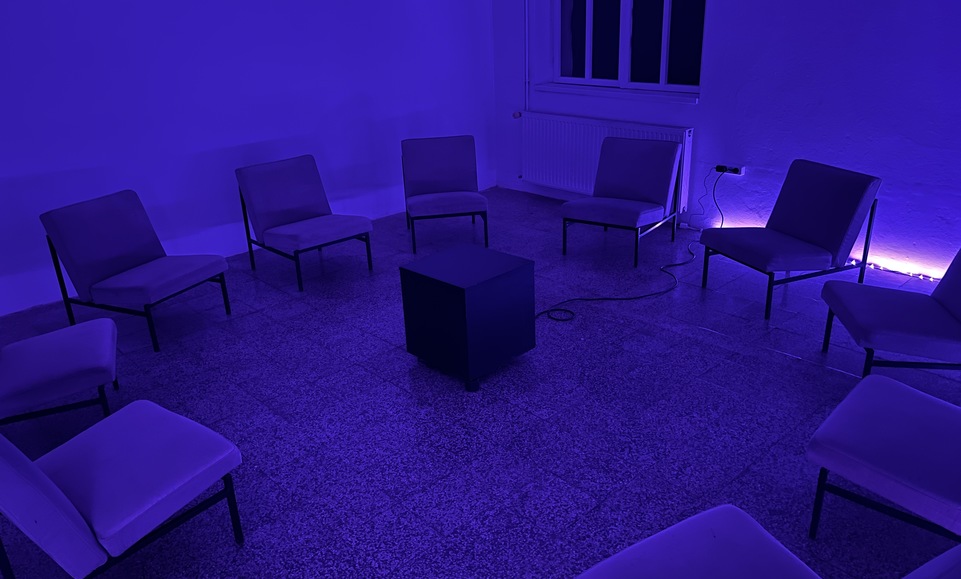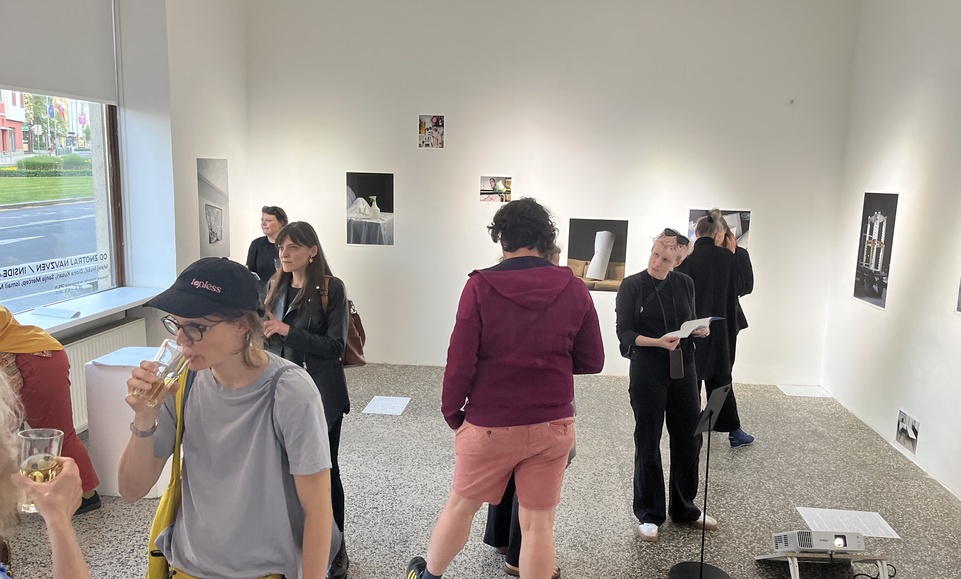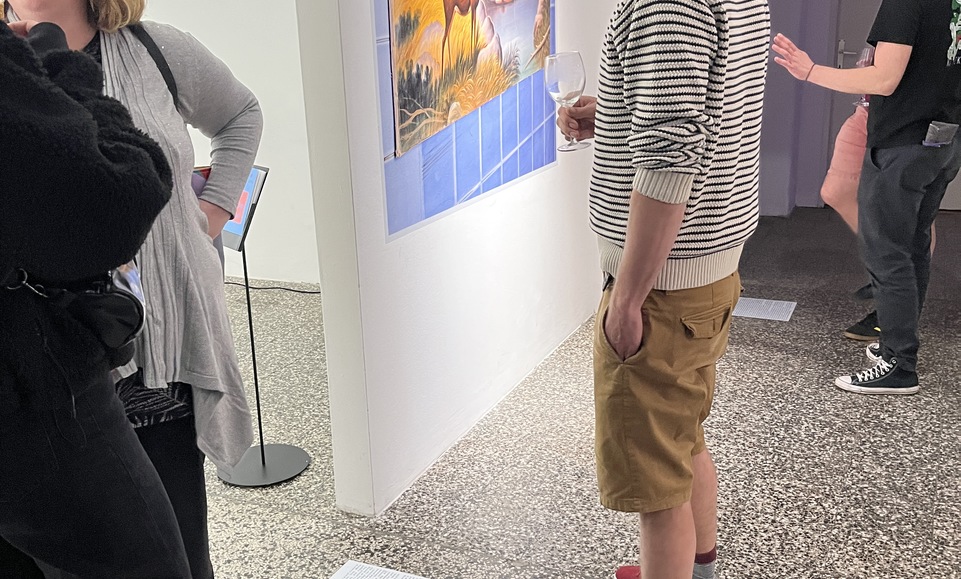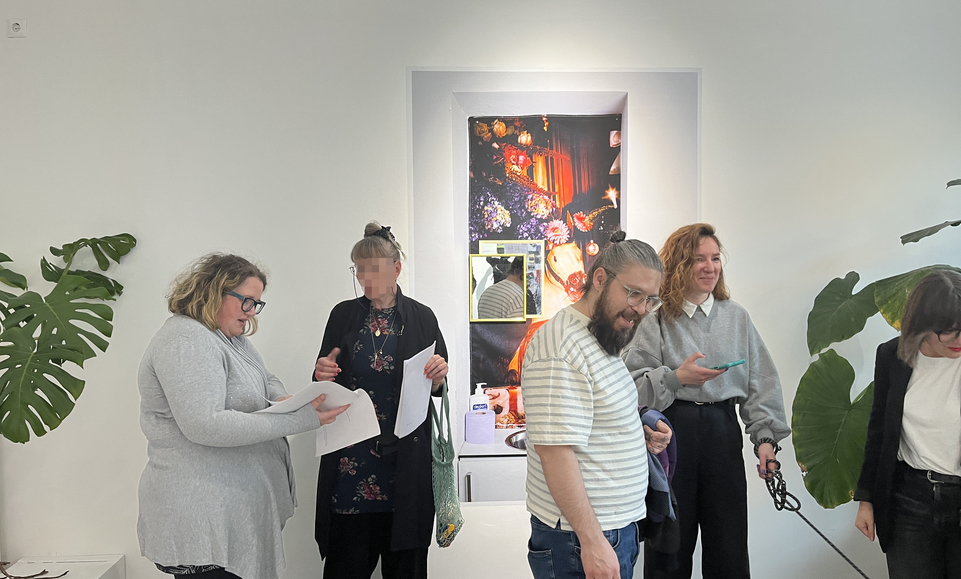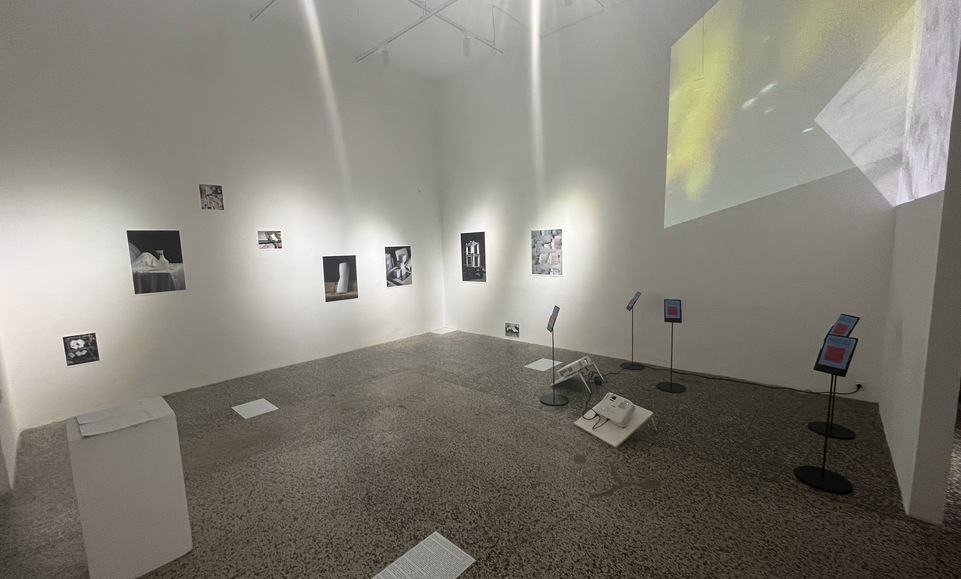Inside-out is the title of a group presentation of the results of the artist residencies that took place between March and April in Kranj and Maribor, as part of the OPE.N program. The primary goal of the residencies was to provide an insight into the local infrastructure and production capacities of the local, independent, cultural scene, which was the starting point for the works created during the residencies. The course of the residencies was not exclusively production- oriented, but experiential, with an emphasis on the integration of the residents into the local scene, with the aim of getting to know individuals as its bearers, understanding the mechanisms of its operation and gaining insight into the physical spaces intended for independent culture.
During the month of March, residents from Kosovo, interdisciplinary artist Diona Kusari and music researcher Ismail Myrseli, stayed at the Layer House in Kranj, where they got to know the cultural landscape of Kranj and Ljubljana. In April, we hosted a resident from Croatia, photographer Sanja Merćep, and journalist Matej Ivušić, in the studios of Vetrinjski dvor in Maribor. During their residency, Sanja and Matej primarily learned about independent culture that is produced and happening in Maribor.
Matej Ivušić approached Maribor through the eyes of the independent cultural scene from the position of an investigative journalist. Based on the experience of the spaces and the people who work in them and co-create them, he selected the interlocutors with whom he conducted interviews. Based on the profiles of local cultural workers, the author wants to encompass a wide spectrum of activities and pluralities that the independent cultural scene creates in the city.
Unlike Matej, music researcher Ismail Myrseli approached a similar process more speculatively, which means that he designed the interviews according to a subjective assessment and used them for a speculative-comparative analysis of selected areas of the musical landscape. He compared cultural workers, whom he did not select based on local affiliation but on a common denominator – they work in the field of music in Slovenia – to a water ecosystem, looking for common points such as constant fluidity, connectivity and the important relationship of humans (the audience) to this ecosystem. The author, for example, compares rivers that flow into lakes or the sea with musical groups and individuals who meet at festivals, joint record labels and radio broadcasts. He compares a polluted river with non-functioning musical infrastructure, such as rehearsal spaces or performance venues, emphasizing the importance of constant care for the environment, which enables the existence and preservation of a healthy scene or aquatic ecosystems.
The thesis about the importance of production infrastructure is related to a series of authorial photographs created by photographer Sanja Marćep during her residency. Her approach stems from an interest in the properties of physical spaces, beyond the content for which they are primarily intended. Through an intimate dialogue between the artist with the camera and the production spaces, without the presence of guardians and the audience, Sanja explored the characters of these spaces, which are viewed in their anomalies, specificities and traces of use and habitation in them. Through the process of observation, the artist focused her attention on both humorous scenes and details that testify to the physical state of the spaces, which to a large extent represents a prerequisite for any production.
In contrast to observing and researching actors and spaces intended for culture, interdisciplinary artist Diona Kusari decided to actively participate in the processes of creating cultural content during her residency. She participated in performative exercises, musical improvisations, carnival processions and open sessions at various organizations. She recorded her own experiences and documented them soundly, to which she embarked on an original contribution in the form of a sound collage. Through the exploration of new cultural canons, she approaches collage according to the principle of confronting new experiences in the form of experimental sound recordings, with sound samples that she understands as familiar, familiar - part of her own identity. Although it is an authorial approach, the work is ultimately the result of spontaneous and agreed collaborations with individuals who are actively active within the Slovenian cultural landscape.
Operation New (OPE.N) is a project funded by the European Union and implemented by the Operation Grad association from Zagreb, the Lumbardhi foundation from Prizren and the Association from Ljubljana.
The project in Slovenia was carried out in cooperation between Društvo Asociacija and the Carnica Institute from Kranj as well as Pekarna Magdalenske mreže from Maribor.
